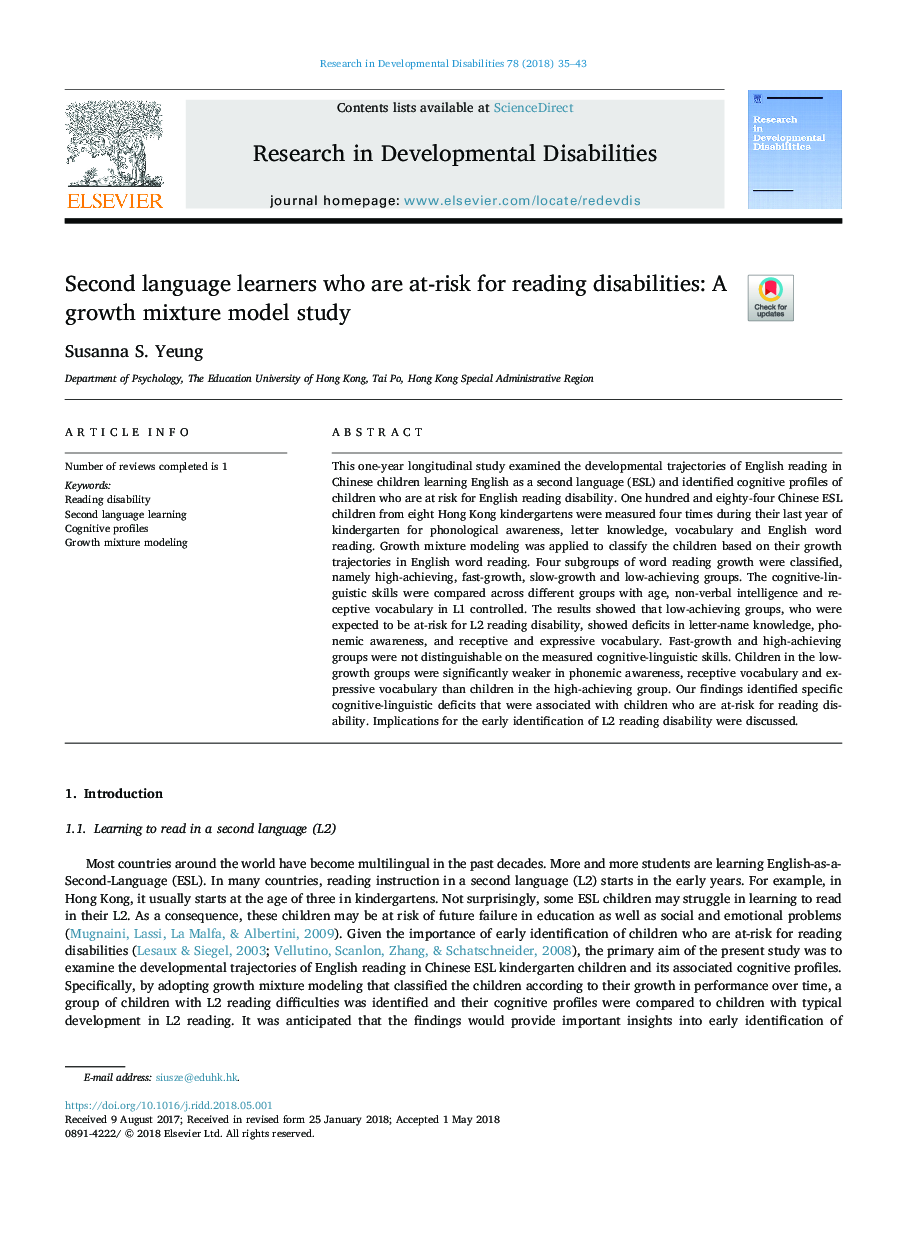| Article ID | Journal | Published Year | Pages | File Type |
|---|---|---|---|---|
| 6848147 | Research in Developmental Disabilities | 2018 | 9 Pages |
Abstract
This one-year longitudinal study examined the developmental trajectories of English reading in Chinese children learning English as a second language (ESL) and identified cognitive profiles of children who are at risk for English reading disability. One hundred and eighty-four Chinese ESL children from eight Hong Kong kindergartens were measured four times during their last year of kindergarten for phonological awareness, letter knowledge, vocabulary and English word reading. Growth mixture modeling was applied to classify the children based on their growth trajectories in English word reading. Four subgroups of word reading growth were classified, namely high-achieving, fast-growth, slow-growth and low-achieving groups. The cognitive-linguistic skills were compared across different groups with age, non-verbal intelligence and receptive vocabulary in L1 controlled. The results showed that low-achieving groups, who were expected to be at-risk for L2 reading disability, showed deficits in letter-name knowledge, phonemic awareness, and receptive and expressive vocabulary. Fast-growth and high-achieving groups were not distinguishable on the measured cognitive-linguistic skills. Children in the low-growth groups were significantly weaker in phonemic awareness, receptive vocabulary and expressive vocabulary than children in the high-achieving group. Our findings identified specific cognitive-linguistic deficits that were associated with children who are at-risk for reading disability. Implications for the early identification of L2 reading disability were discussed.
Related Topics
Life Sciences
Neuroscience
Behavioral Neuroscience
Authors
Susanna S. Yeung,
